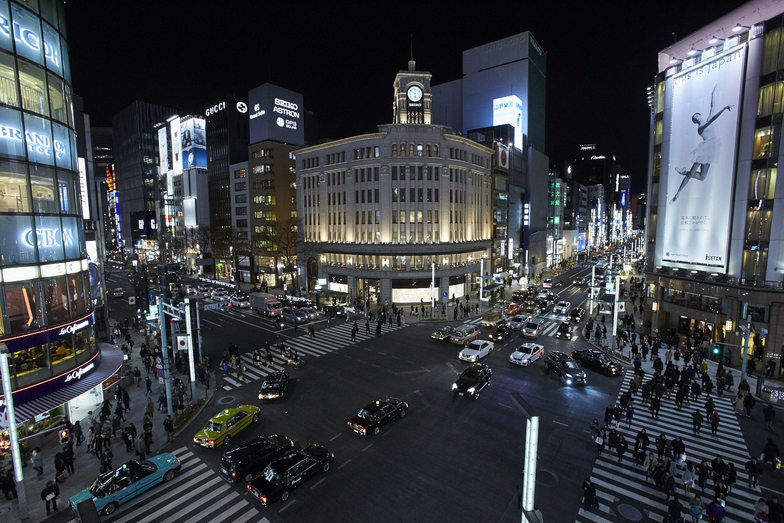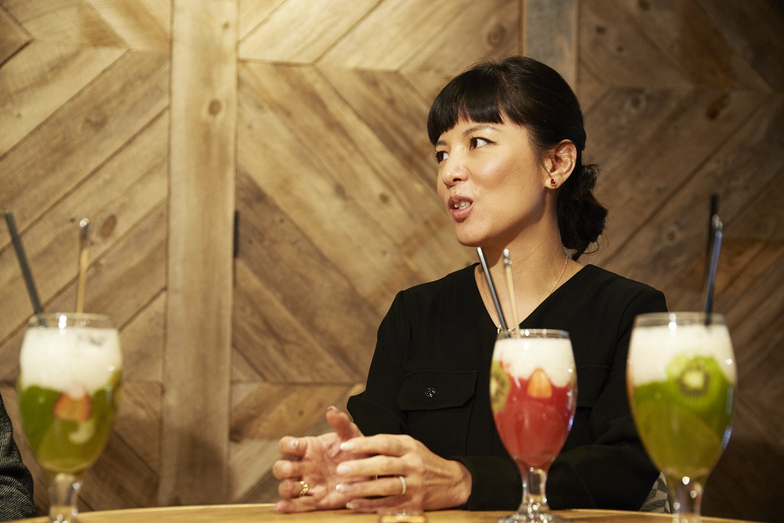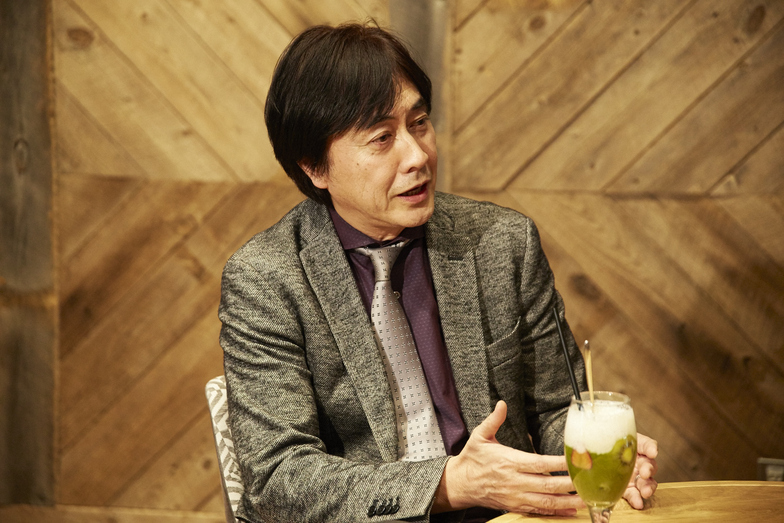On January 4, 2017, Dentsu Group launched a new company, "Dentsu Live Inc.," which boasts Japan's largest track record and capabilities in the event and space domain. In this series themed around Dentsu Live Inc.'s "MOMENT OF TRUTH," Dentsu Live Inc. employees and top creative leaders from inside and outside the company will share various visions with our readers. This is the second part of the conversation between Dentsu Live Inc. Vice President Jun Naito, Seiichi Saito of Rhizomatiks, and Yoko Shibata of Yoko Shibata Office.
Interview & Editing: Aki Kanahara, Dentsu Live Inc., Creative Unit 2 Creative Room
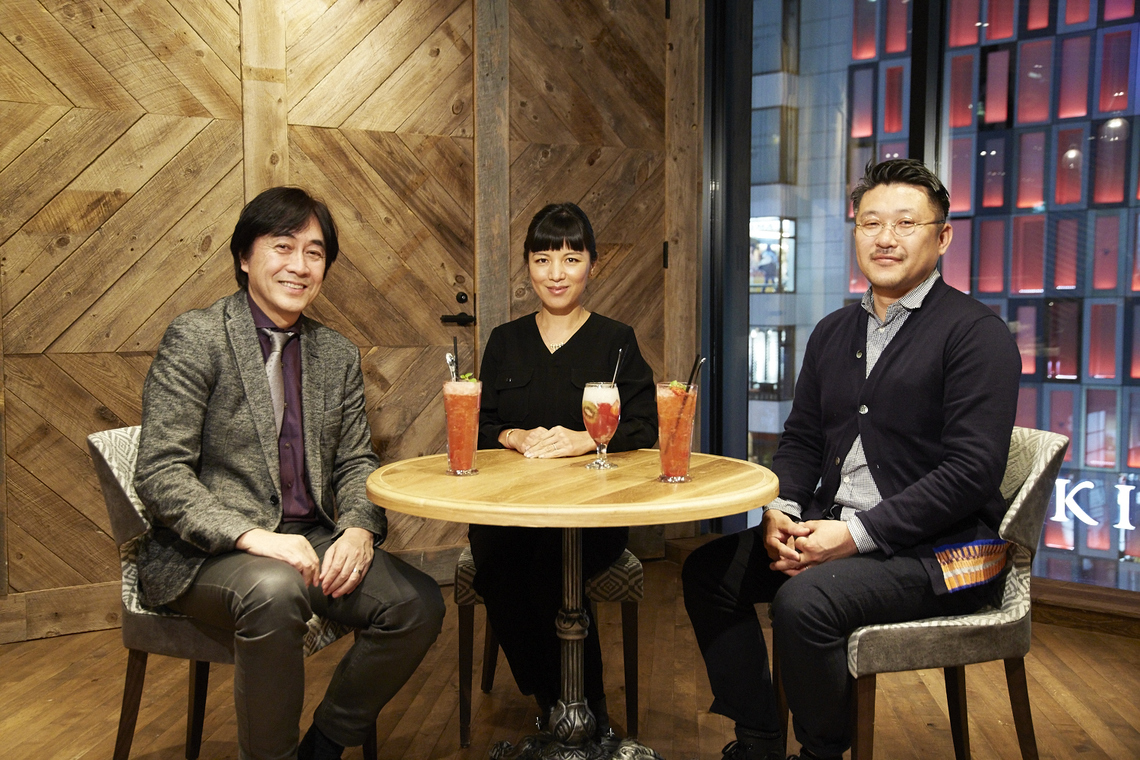
(From left) Mr. Naito, Ms. Shibata, Mr. Saito
Photo協力: GINZA PLACE 3F "common ginza"
Japanese people excel at methodically creating complex things
Naito: Mr. Shibata, you've worked not only on store production but also on projects like Shibuya Hikarie and the Palace Hotel. When considering large organizational complexes, there must be various secrets to how you build them.
Shibata: I'm also very interested in the kind of town planning Mr. Saito mentioned. But when I think about things, people are the starting point. Because I like people, I always start with them. I build things starting from "what kind of town do we want people to think of?"
We consider our shared history, natural assets, and people's preferences, then first define "what kind of city we want to be perceived as." We then thoughtfully organize the strengths of neighborhood associations, companies, and individual stakeholders, collaborating to build things together. This ability to play as a team is a wonderful quality of the Japanese people.
Naito: That's right. For example, I don't think hotels function solely as hotels anymore, or restaurants solely as restaurants. The three of us worked together on the Japan Pavilion at the Milan Expo: Saito handled the visuals, and Shibata managed the food and beverage. When considering what to present to the many people gathered from around the world, I felt that this complex interplay of presentation methods is perhaps quintessentially Japanese.
This very place we're talking in today, the third floor of Sapporo Real Estate's " GINZA PLACE " building, " common ginza " – we launched it after Shibata-san introduced us to Shujiro Kusumoto of Cafe Company. Located at the prime Ginza 4-chome intersection, with a veranda offering a direct view of the Wako clock tower right in front... there's simply no other place as wonderful as this. Ginza's prime location is also Japan's prime location, right? That's why we planned it not just as a cafe, but also to be usable for events. I hope we can use this place to share a little bit of Japanese culture with people coming from overseas.
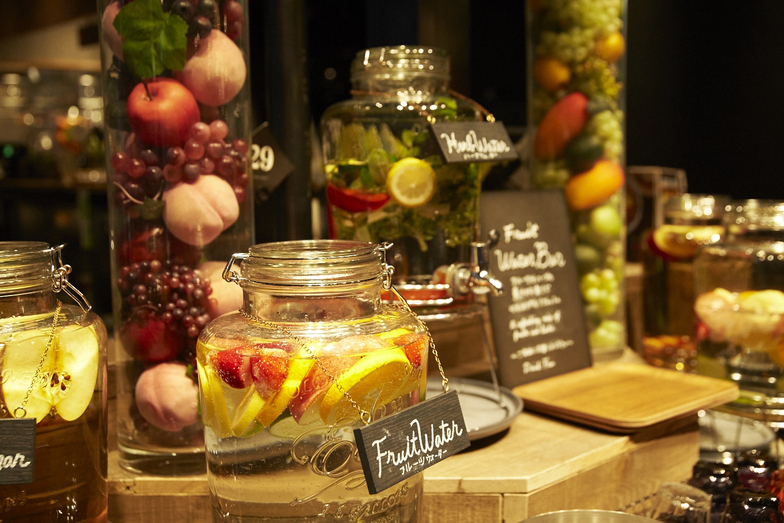
RAMO FRUTAS CAFE, located on the 3rd floor of "
common ginza " within "
GINZA PLACE," developed and operated by Dentsu Live Inc.
Available for cafe tie-ins and event rentals.
Saito: Since it's right in the heart of Ginza, where people from all over the world come, it would be great if we could make it a multilingual space where people from diverse cultures can gather and interact!
Shibata: I agree. It's crucial for people worldwide who share the same interests or curiosity to deepen their understanding through food and events in a physical space. I hope this place hosts events that open doors to the future, becoming a destination where visitors can find new inspiration.
Operating "Omotenashi"
Naito: They say "clothing, food, and shelter" since ancient times. Shibata-san, you're a pro in "food," but you're actually strong in "clothing" too, having launched a fashion brand, right?
Shibata: I've been running an apparel brand called " BORDERS at BALCONY " for about four years now.
Naito: When it comes to "shelter," both Saito-san and probably Shibata-san, and even TeamLab's Toshiyuki Inoko, all say they want to produce hotels. Hotels or ryokan inns. Indeed, Japanese-style inns embody the essence of "omotenashi." They offer beautiful food, evolving spaces, a complete story from arrival to departure, and souvenirs to take home. That condensed, quintessentially Japanese experience is probably why everyone wants to do it.
Saito: That's true.
Naito: That's why we launched the "O-mo-te-na-shi" project with Shibata-san.
Shibata: "Great Omotenashi Studio!"
Naito: Ultra or Great (laughs). Basically, for us, most jobs ended after we made and delivered the product. But Mr. Shibata always thinks about running the business itself. He has the know-how to say, "We don't just make it and leave; we see it through to the end." So we thought we should learn from him.
Shibata: My philosophy is this: if you're going to create a space, it must become a good workplace for those who work there, a comfortable place for the customers who visit, and a profitable business for the owners who invested in it. Unless you can create that "win-win-win" system, you shouldn't just go ahead and build something. While others might have brilliant ideas or envision the form, my role is to focus on the "human element." That's precisely why I can collaborate with top-tier professionals like Saito-san.
It's about defining the place's character: "We want visitors to feel this way, so let's act like this." For example, if all volunteers at the Olympics greeted foreign visitors kneeling, wouldn't they get the impression of Japan as the land of the samurai?
If everyone adopts a specific characteristic, you can guide their impressions, right? I want to create a defining feature that makes Japan appear most beautiful and prosperous. Then, educate everyone on it, have them enjoy putting it into practice, receive praise from visitors, and ensure they take home precisely the global impression Japan aims for.
This can be done anywhere—commercial facilities, streets, everywhere. When I trained drivers for Nihon Kotsu, we standardized their mindset and movements under the "business-class taxi" concept. We want people to feel a company's identity through its hospitality and operations.
Who creates the protocols to express the "philosophy of operation"?
Saito: That's brilliant! Lately, I've been involved with developers and urban planning projects, and I often joke that we're always called in as the "magic solution" (laughs).
Shibata: Ah, that's right. I always think how enviable that is (laughs).
Saito: It's flattering that people think, "When Rhizoma comes, they'll do amazing projection mapping" (laughs). But actually, the very first thing I always propose is the operational plan.
Shibata: Huh. I never would have guessed.
Saito: After we figure out how to run things, then we talk about the content.
Naito: That's brilliant.
Saito: If you don't do that, it really becomes a one-off thing, and people get bored after about three months. If you have a solid operational foundation and philosophy, you can secure proper budgets and do regular updates. Ultimately, it's people who create the place.
Also, I often talk about protocols. I think Japan has this "Galapagos aesthetic." Japanese is only spoken by Japanese people, and terms like "galapagos keitai" (Galapagos phone) come from that, right? There's a culture, ways of greeting, customs, and a culture of hospitality that only exists within Japan.
When you think about Japan domestically, competitors don't share a common language, right? Take this Ginza 4-chome intersection now, with all its colorful neon lights. Suppose someone proposed, "At 6 PM on the opening day of the 2020 Olympics, let's all switch to red simultaneously." No one knows who would issue that command or what system could make it happen. No one even discusses it. Essentially, protocols are like headphone jacks – we lack a common language to communicate. Creating that first is incredibly important.
Individuals, companies, and various facilities are surely thinking up different content and plans. But what matters is what kind of line or surface emerges when these connect horizontally. Like Mr. Shibata mentioned earlier, when people come to Japan, having the same greetings, way of speaking, tone, signals, signs. The time to decide on such protocols is probably now.
Shibata: That's right.
Saito: We should actively move forward with concrete implementation. Reflecting on the mistakes of the bubble era's box-like structures, when we truly put people at the center, encounters between people inherently create what's commonly called hospitality – a flow of time spent together. Without a fundamental operational perspective, this simply won't work. If we don't build that foundation, we ultimately can't express anything.
Tetsuya Mizuguchi once used the term "warm tech" – technology that possesses warmth, a human touch. What I'm doing feels very close to that. Technology, whether AI or robots, often feels cold and impersonal. But we can actually infuse it with warmth.
Even as everything becomes high-tech, humans still possess the most remarkable sensor: each other. And when humans speak, they converse most naturally with other humans. Even in an F1 team, where everything is calculated down to AI and communication speeds, the person ultimately gripping the steering wheel is human. If you controlled everything perfectly, down to 0.001 seconds, it would probably become boring.
Rather than controlling everything with technology, I think the most important thing we should do going forward, the area with the most potential, is to show the variations created by people and cities, including the gaps.
Using technology as a tool to create cities where people truly "live"
Naito: Mr. Shibata, you create educational programs and teach them yourself. You also use digital tools to develop many hospitality programs for companies with numerous stores, right?
Shibata: Yes. I've now started a company called "Air College." We create video content that employees and staff can watch on their smartphones – like programs that convey management philosophies, our company's operational rules, and knowledge, presented from various angles. It's busy, but it's fun.
Naito: What are your goals for this year, Saito?
Saito: People often say that ultimately, a town is made up of its people. Takao Kitayama of Kitayama Soken once said that if you create one great coffee shop, the whole town becomes more enjoyable. Technology is the tool that helps amplify that effect. It functions much like the megaphones of the past. Figuring out which tools to combine effectively, whether for towns or people, seems key to bridging the scale gap. That's my goal to pursue this year.
Shibata: If Dentsu Live Inc. becomes a vital company for society, consolidating the aspirations of businesses and local governments, there are plenty of execution teams like us small boutique companies ready to step in. We'd love to build hotels too!
Naito: Let's definitely collaborate on various projects using the city as our stage. Dentsu Live Inc. will do our best, so we look forward to your continued support!
<End>




